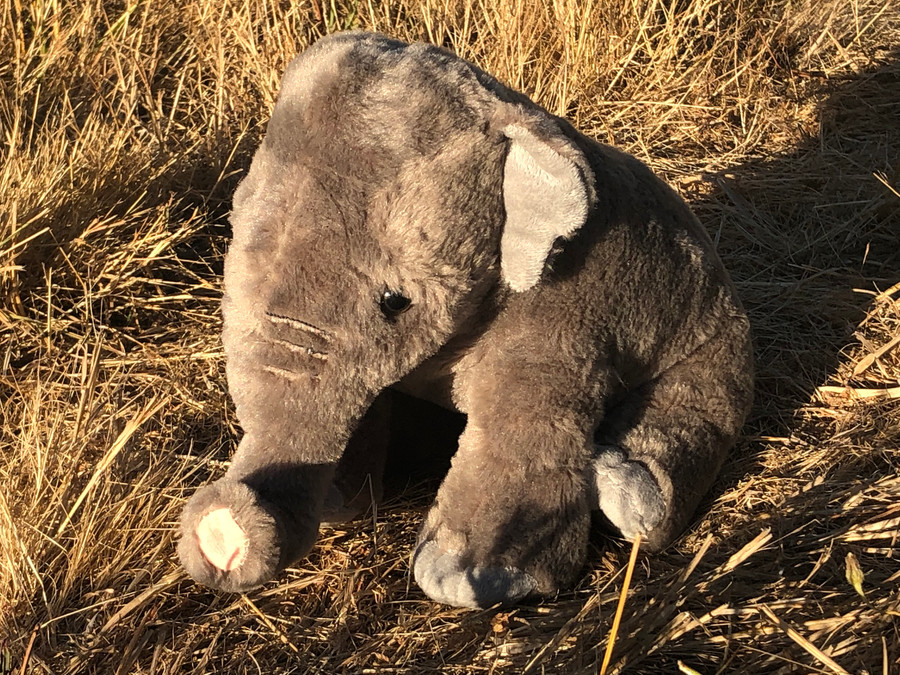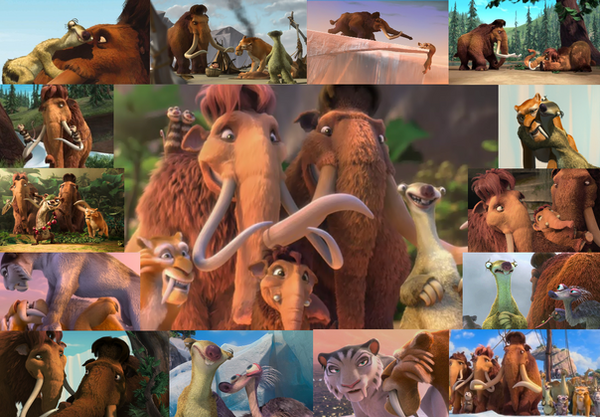HOME | DD
 AustinSPTD1996 — Word Elephant Day 2023
AustinSPTD1996 — Word Elephant Day 2023

#conservation #asianelephants #takeaction #worldelephantday #elephantday2023
Published: 2023-08-12 15:13:21 +0000 UTC; Views: 1958; Favourites: 7; Downloads: 1
Redirect to original
Description
Be sure to read the description before commenting below.Happy World Elephant Day! Today's a day to showcase one of my plushes while helping spread awareness on these iconic and impressive pachyderms. For today's photo, I have my Asian elephant plush Eleanor sitting on a patch of grass towards the northwest of my house while facing the morning sun. Asian elephants can be found in grasslands (similar to African savanna elephants) in addition to dry and rainforests, so it works out. For those interested, here are some facts on Asian elephants, courtesy of the Oregon Zoo -- which has a multi-generational Asian elephant herd -- as a participant in the Species Survival Plan for the species -- and has gained acclaim for its elephant program, spanning back to 1959.
-----------------------------
Asian elephants (Elephas maximus) are native to the scrub forests and rainforests of India, Nepal and other parts of Southeast Asia. They are one of three species of elephant alive today, along with the two species in Africa. Humans have worked together with these mammals for around 5,000 years. Today, around one third of the species is known to live under human care.
At 6,000 to 13,000 pounds and 7 to 10 feet high at the shoulder, Asian elephants are among the largest living land mammals, but they tend to be smaller than their relatives on the African savanna. Asian elephants also differ in morphology, having heads that are two-bulbed, rounded backs, smaller ears and four toes on their hind feet. Another classic example of sexual dimorphism, only male Asian elephants can have tusks. Not all males will have them, and the gene is becoming increasingly rare in the wild. Elephants can be right- or left-tusked; whichever is more worn down in the one they prefer using. Females have either tushes (inner tusks lacking pulp) or no tusks at all.
Asian elephants live in close social groups known as herds, where they form strong bonds with each other. Females and calves live in multi-generational herds led by the eldest female, known as the matriarch. Adult male elephants, on the other hand, spend their time alone or in "bachelor" herds, only becoming part of matriarchal herds for breeding. As highly intelligent and social mammals, elephants communicate with each other in several ways. Highly vocal, sounds they make include snorts, barks, trumpets and roars. Most of the sounds they make are very low-frequency rumbles used to communicate over distances of over five miles. These are detected by the sponge-like padding on their feet.
Elephants will also use their highly sensitive trunks to communicate via touch. Trunks contain over 150,000 muscles, and they're both strong and precise. They serve multiple purposes like feeding, drinking and bathing. Wild Asian elephants will spend up to 16 hours a day grazing and browsing on grasses, shrubs, fruits, leaves, twigs and tree bark, eating up to 6% of their weight each day. When necessary, they'll walk up to ten miles a day to search for food.
Female elephants, known as cows, become sexually mature around 10 years of age. They're pregnant for 20-22 months, the longest pregnancy of any mammal. Each member of the herd plays a role in the calf's upbringing and care. Newborn calves are about three feet tall and weigh up to 300 pounds. They stand on their own very soon after birth and follow their mothers within a few days. Female calves will stay in their mother's herd for life. Asian elephants have an average lifespan of around 50 years but they can live into their early 60s.
-----------------------------
Asian elephant conservation:
Asian elephants have listed as endangered by the International Union for the Conservation of Nature since 1976, and their numbers are around 40,000 to 50,000 in the wild. Asian elephants live in some of the most densely human-populated regions of the world. They also require large areas of habitat and lots of food, which often puts them in frequent and sometimes deadly conflict with people. Logging, development and agriculture to produce crops such as oil palms have drastically reduced elephant habitat throughout Asia. Poaching for ivory, skin and other products is now a growing threat to Asian elephant populations.
-----------------------------
Four DIY ways to help Asian and African elephants:
1) Use the PalmOil Scan App.
Palm oil – used in foods, cosmetics and other products – is the world's most popular vegetable oil. The process of producing it destroys tropical habitats and significantly contributes to greenhouse gas emissions. Some companies are taking steps to reduce their palm oil's impact on the environment. Use the PalmOil Scan App , produced by Cheyenne Mountain Zoo, to check if the product you are about to purchase is made by a company working to switch to deforestation-free palm oil. The app is color-coded to tell you if registered products are excellent (green), good (yellow) or need improvement (orange), depending on the company's commitments.
2) Look for the FSC-certified label on wood and paper products.
Whether you’re purchasing napkins, a desk, printer paper or a bed frame, look for the Forest Stewardship Council (FSC) label to help ensure that your wood product is “friendly” to forests. Forests are home to 80% of the world’s terrestrial biodiversity and they help to stabilize the earth’s climate. FSC standards help limit clear cuts, restrict the most hazardous chemicals and reduce erosion along rivers.
3) Opt out of junk mail.
Each American household receives more than 100 pounds of junk mail every year, costing forests millions of trees and destroying homes for wildlife. Get off multiple mailing lists at once by calling the Direct Marketing Association at 212-768-7277 and request to be placed on the suppression file, or send a note with a $3 check or cash order to: Mail Preference Service C/O Direct Marketing Association P.O. Box 643 Carmel, NY 10512.
4) Waste less food at home.
Forty percent of the food we buy never gets eaten, and wasted food hurts wildlife. Agriculture and food transportation can damage habitats worldwide, from the Arctic to the plains. Storing food properly, considering portions and shopping carefully can help prevent the wasting of food and prevent the burning of fossil fuels to transport it. These simple actions help protect wildlife and the habitats we all depend on.
You can also help by supporting a conservation organization like the International Elephant Foundation , which works with partners and facilities to create a sustainable future for wild elephants by combatting human-elephant conflict and poaching.





















